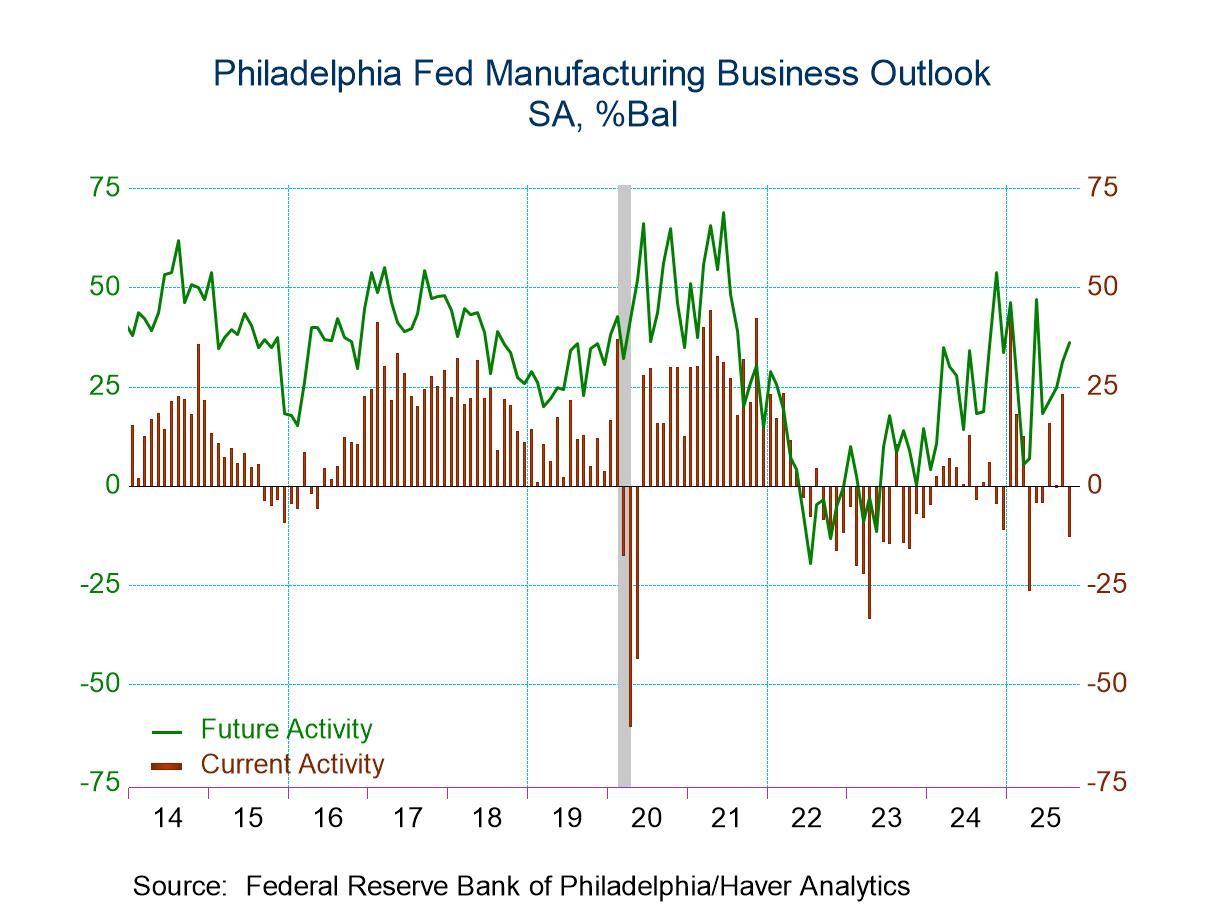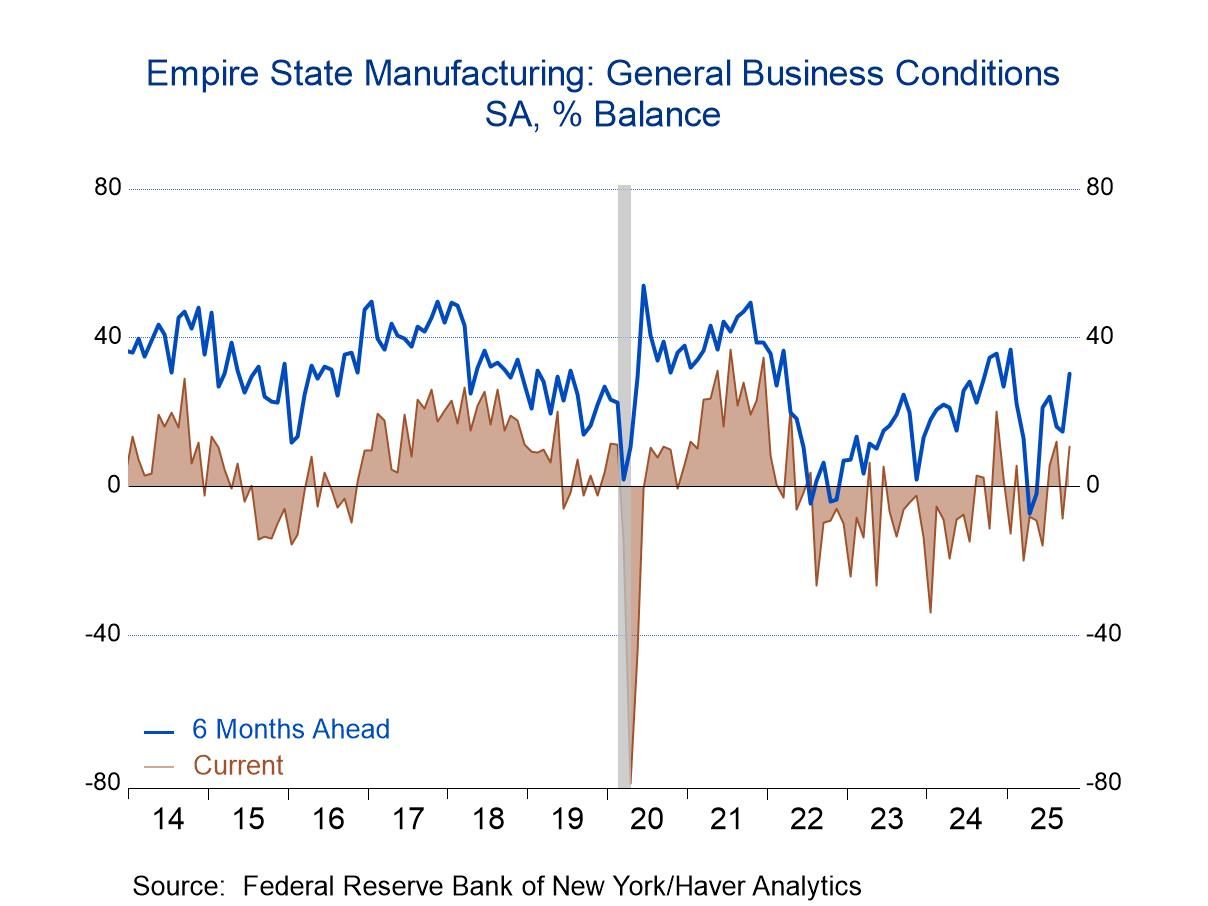NABE Lowers Growth Expectations for Next Year & 2022
by:Tom Moeller
|in:Economy in Brief
Summary
- Consumer spending growth is reduced; capital spending is raised.
- Housing starts are predicted to ease. Vehicle sales growth is trimmed.
- Price inflation and interest rate estimates are raised.
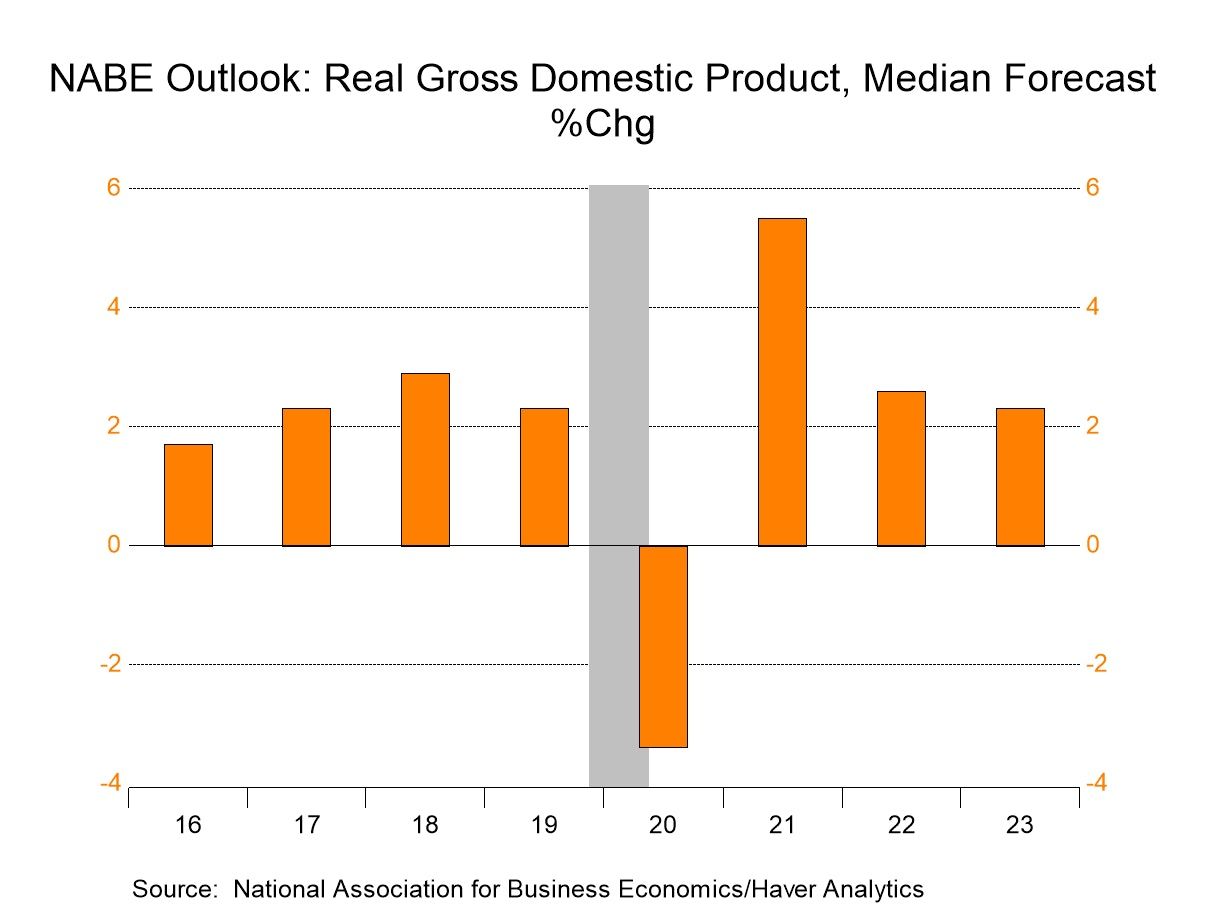
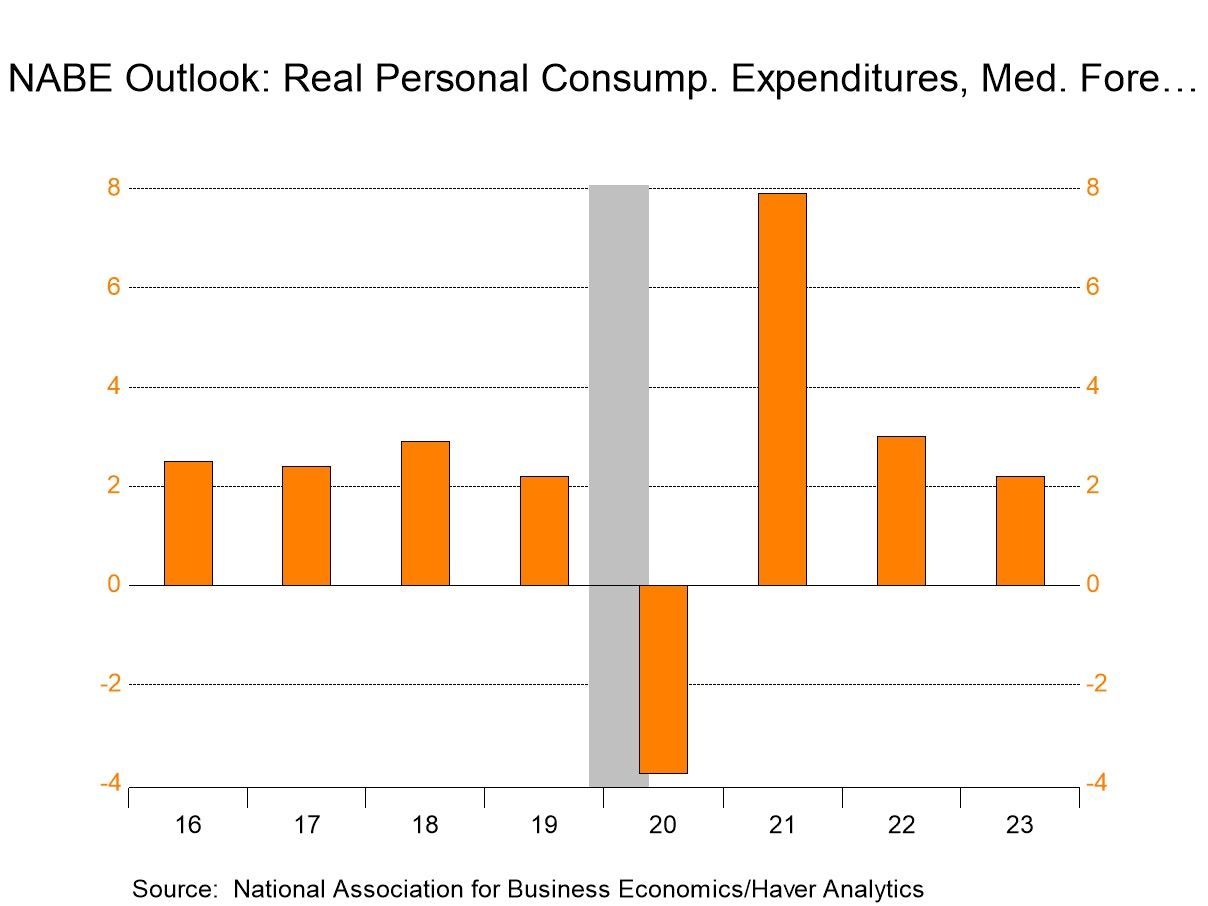
The National Association for Business Economics expects the economic expansion to continue through its third year. It calls for real GDP growth in 2023 of 2.1% (Q4/Q4), revised from 2.3% expected late in February. That follows a 1.8% rise expected for 2022, revised from 3.0%. Expected growth was lowered for each quarter this year following the unanticipated Q1 decline. Personal consumption expenditures are forecast to grow 2.2% in 2023 following a 3.0% rise in 2022, revised from 3.5%. Business fixed investment is expected to rise a lessened 3.9% next year after a little-changed 6.0% rise in 2022. Expected growth of 1.3% in residential investment next year was revised from 2.0% and it should follow a little-changed 0.4% growth in 2022. Government spending growth is expected to improve an unchanged 1.5% in 2023 after a 0.5% decline in 2022, revised from +0.6%.
The net export deficit is expected to lessen in 2023 following a larger-than-expected deepening in 2022. U.S. export growth is expected to rise 5.3% following a 4.6% advance in 2022. Import growth should slow to 3.3% from 9.5% in 2022. Accumulation of inventories is expected to slow to a lessened $108 billion from a little-changed $117 billion in 2022, which follows two consecutive years of decumulation.
Housing starts are forecasted to decline to 1.55 million units next year after rising to an estimated 1.66 million units in 2022. Light vehicle sales are projected to increase to a lessened 16.5 million this year after holding steady at 15.1 in 2022, revised from 15.7 million units. Sales will remain below the 2016 peak of 17.5 million. An average monthly gain in payroll employment of 151,000 next year was revised from 172,000, and it's expected to follow 369,000 monthly growth this year, revised from 317,000. Expectations for the unemployment rate place it at 3.6% next year, revised from 3.5%, after falling to 3.6% in 2022, revised from 3.7% projected in January.
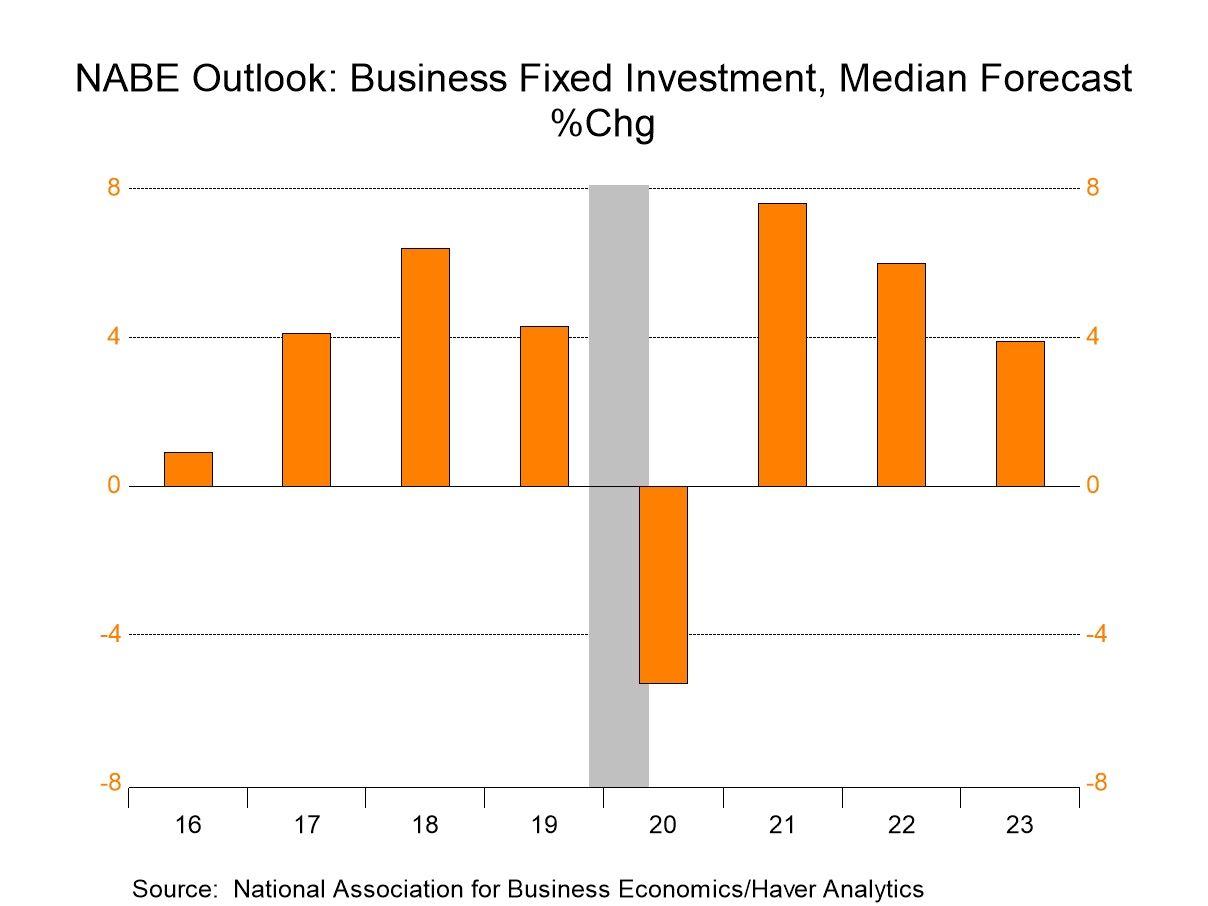
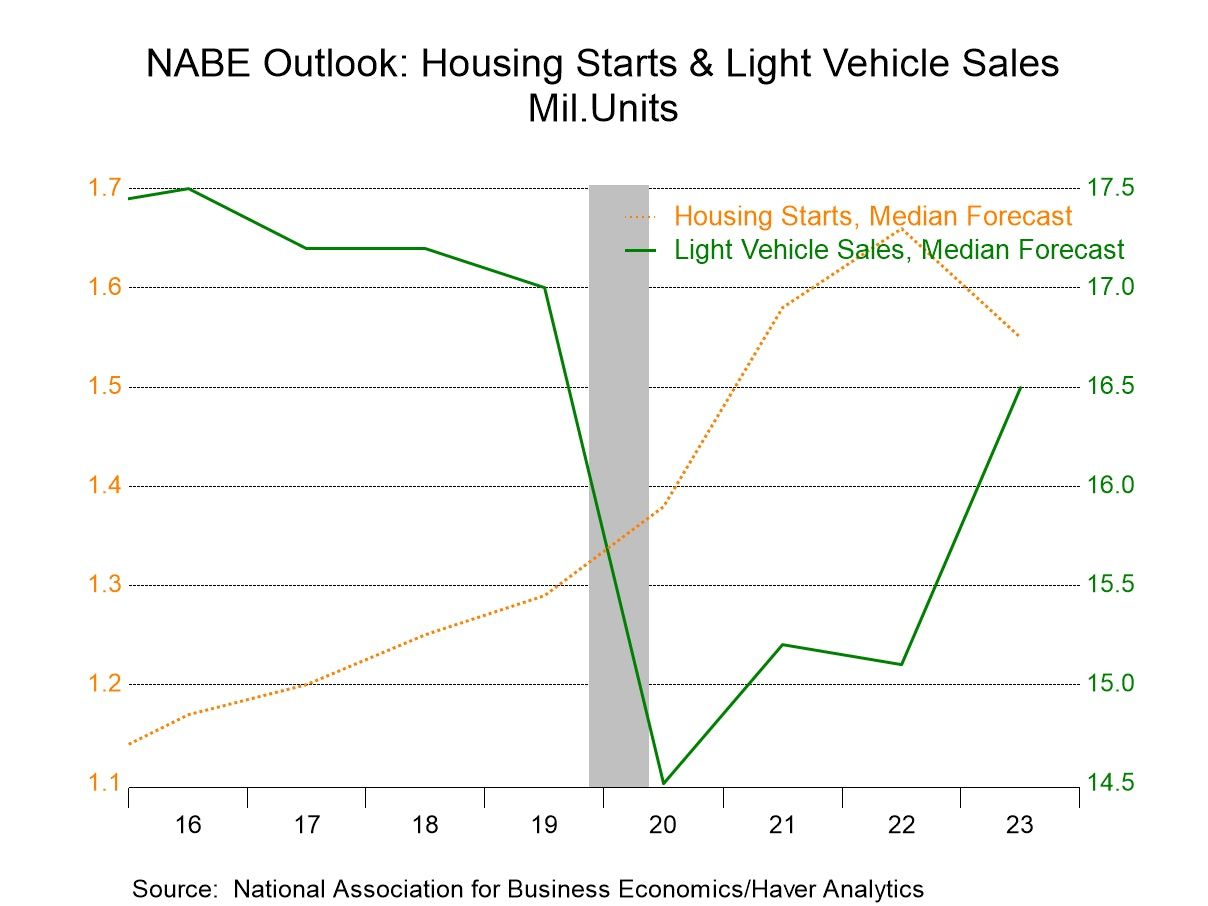
Inflation pressures should strengthen. The Consumer Price Index is projected to rise 2.6% Q4/Q4 next year, revised from 2.4%, after a 5.6% advance in 2022, revised from 3.6%. Price inflation next year, as measured by the PCE price index, is expected to slow to a little-changed 2.4% (Q4/Q4) after a 4.8% gain in 2022, revised from 3.2%. The chain PCE price index excluding food & energy should rise 2.5% next year, revised from 2.2%, following 4.2% growth in 2022, revised from a 3.2% rise expected earlier. The cost of crude oil is expected to average $84 per barrel by the end of 2023, revised from $72 per barrel , following $98 per barrel at the end of this year, revised from $78 per barrel.
Interest rates are expected to rise more than anticipated earlier. The forecasted 3.25% interest rate on a ten-year Treasury note at the end of 2023 compares to an expected 2.30% expected earlier. At the end of this year, the anticipated 3.06% rate compared to 2.10% expected earlier. The Federal funds rate is projected to rise to 3.00% at the end of 2023, compared to 1.875% expected earlier, after increasing to 2.38% at the end of this year, revised from 1.124% expected earlier. After-tax corporate profits should rise a slightly lessened 2.4% in 2023 after strengthening 4.0% in 2022, unchanged from the earlier estimate. Both gains are down from the post-recession jump of 23.2% in 2021. The expected Federal government budget deficit should ease to $1.003 trillion after falling to $1.200 trillion in trillion in FY22. The deficit hit a peak of $3.129 trillion in 2020.
The figures from the latest NABE report can be found Haver's SURVEYS database.
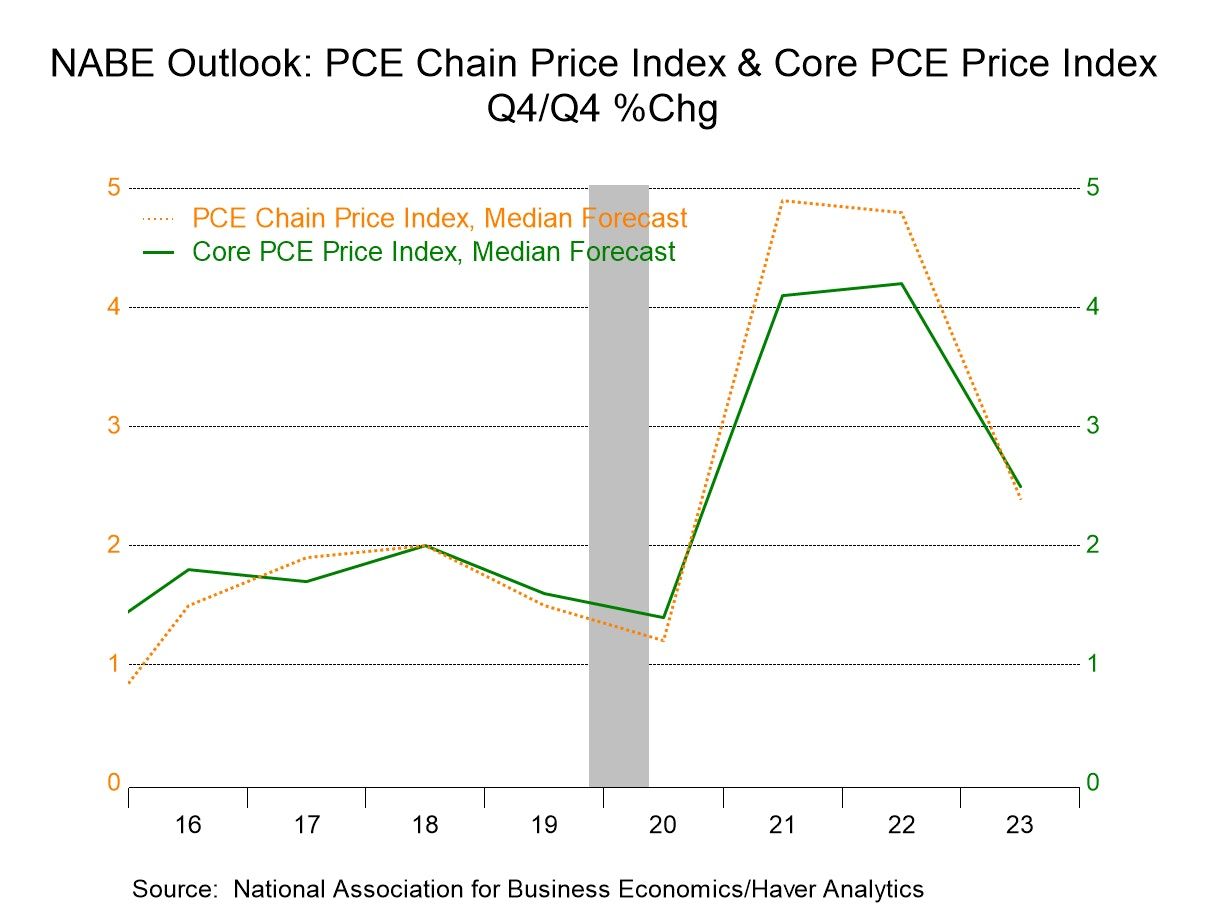
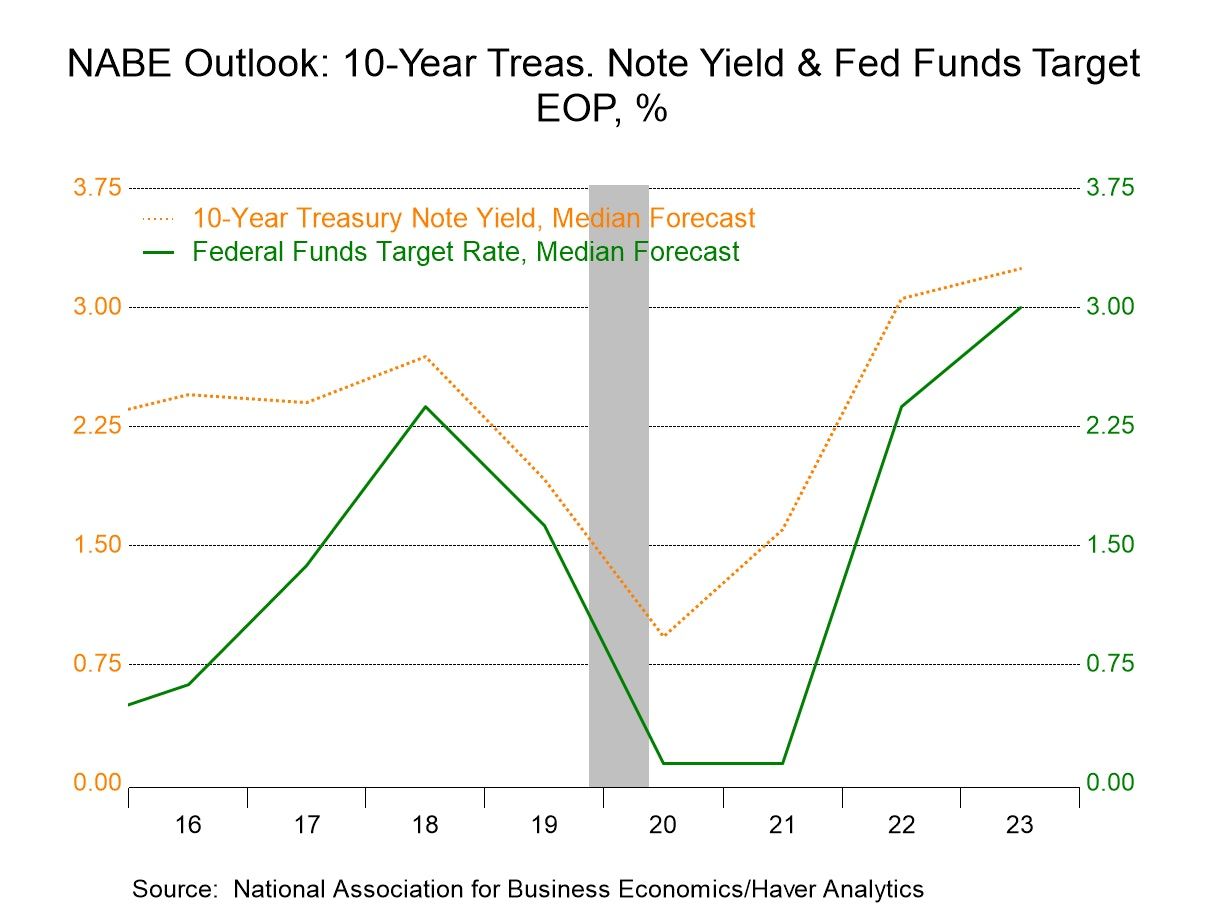
Tom Moeller
AuthorMore in Author Profile »Prior to joining Haver Analytics in 2000, Mr. Moeller worked as the Economist at Chancellor Capital Management from 1985 to 1999. There, he developed comprehensive economic forecasts and interpreted economic data for equity and fixed income portfolio managers. Also at Chancellor, Mr. Moeller worked as an equity analyst and was responsible for researching and rating companies in the economically sensitive automobile and housing industries for investment in Chancellor’s equity portfolio. Prior to joining Chancellor, Mr. Moeller was an Economist at Citibank from 1979 to 1984. He also analyzed pricing behavior in the metals industry for the Council on Wage and Price Stability in Washington, D.C. In 1999, Mr. Moeller received the award for most accurate forecast from the Forecasters' Club of New York. From 1990 to 1992 he was President of the New York Association for Business Economists. Mr. Moeller earned an M.B.A. in Finance from Fordham University, where he graduated in 1987. He holds a Bachelor of Arts in Economics from George Washington University.



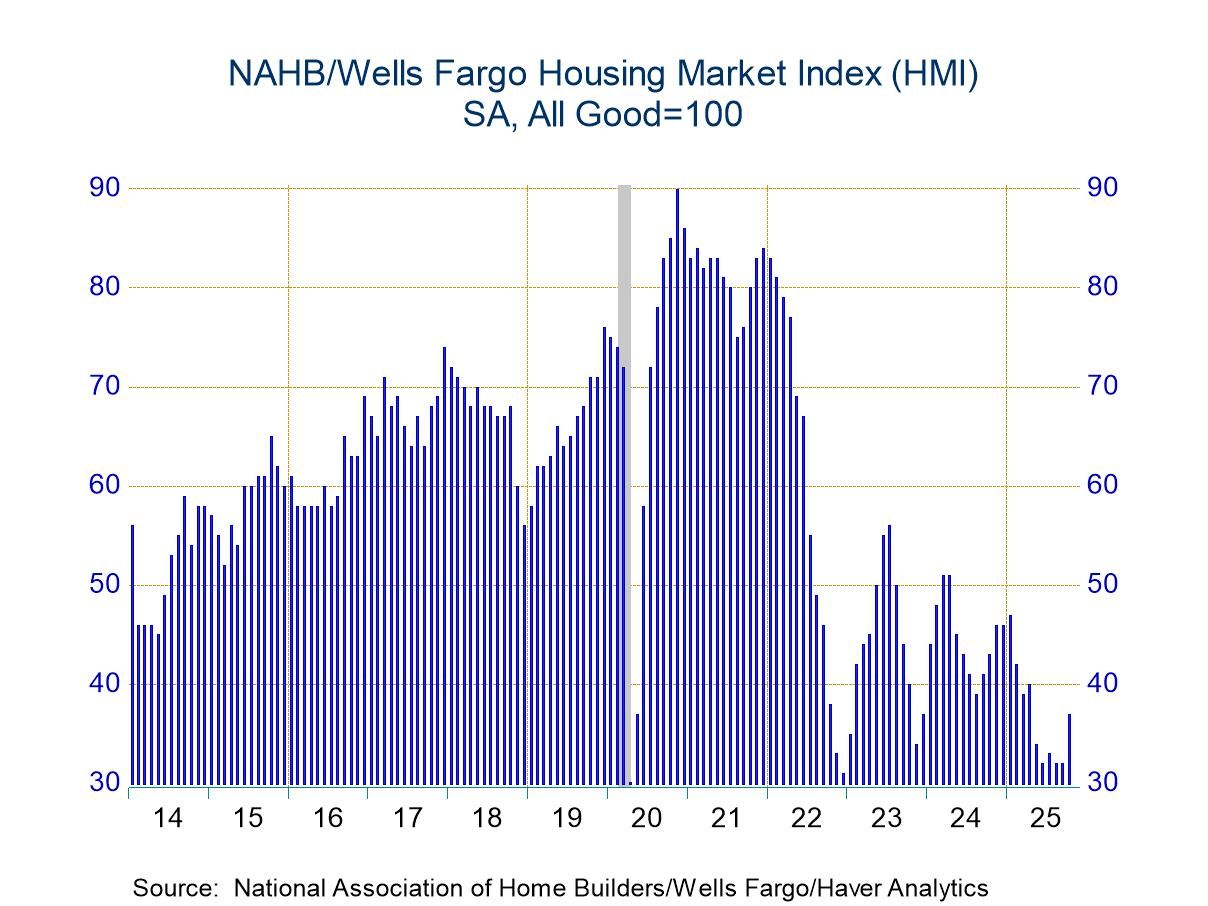
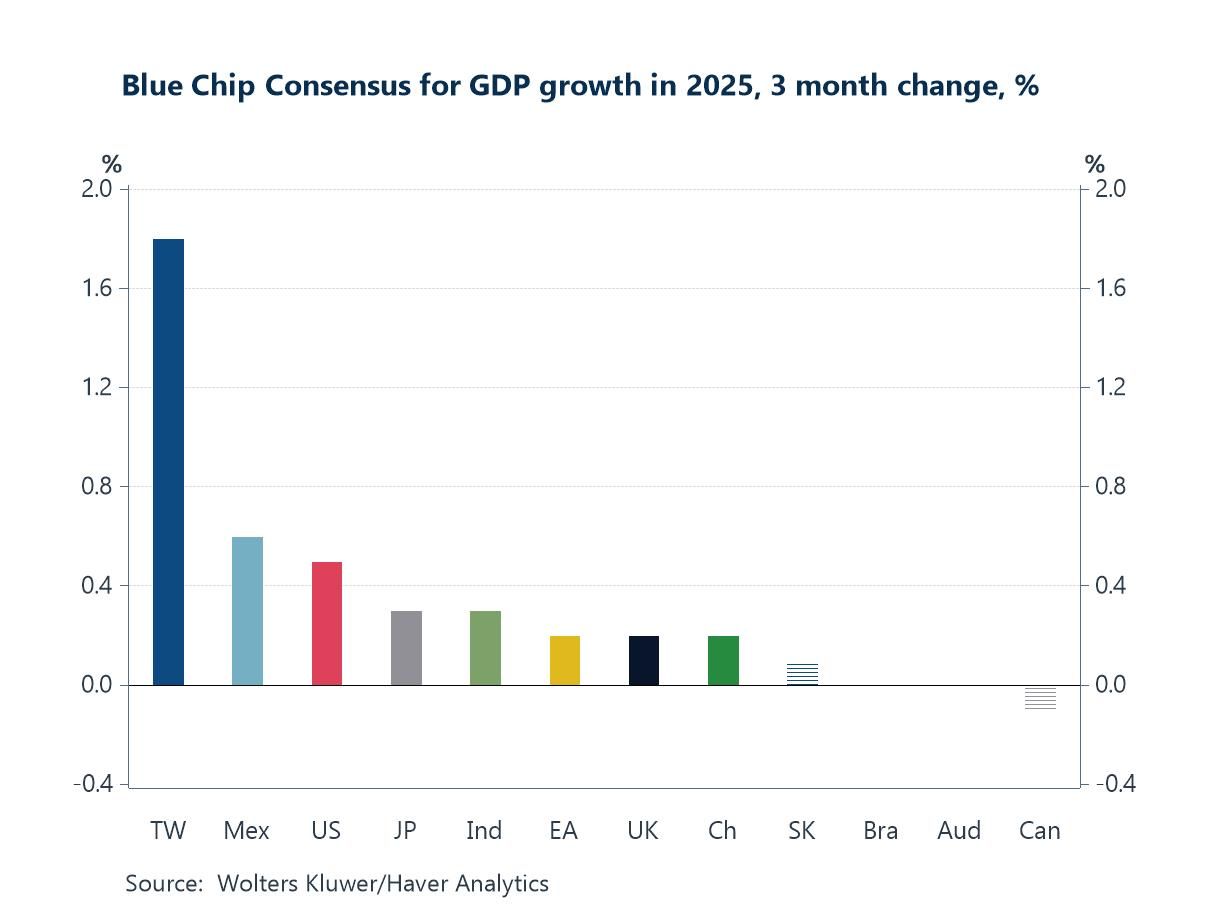
 Global
Global